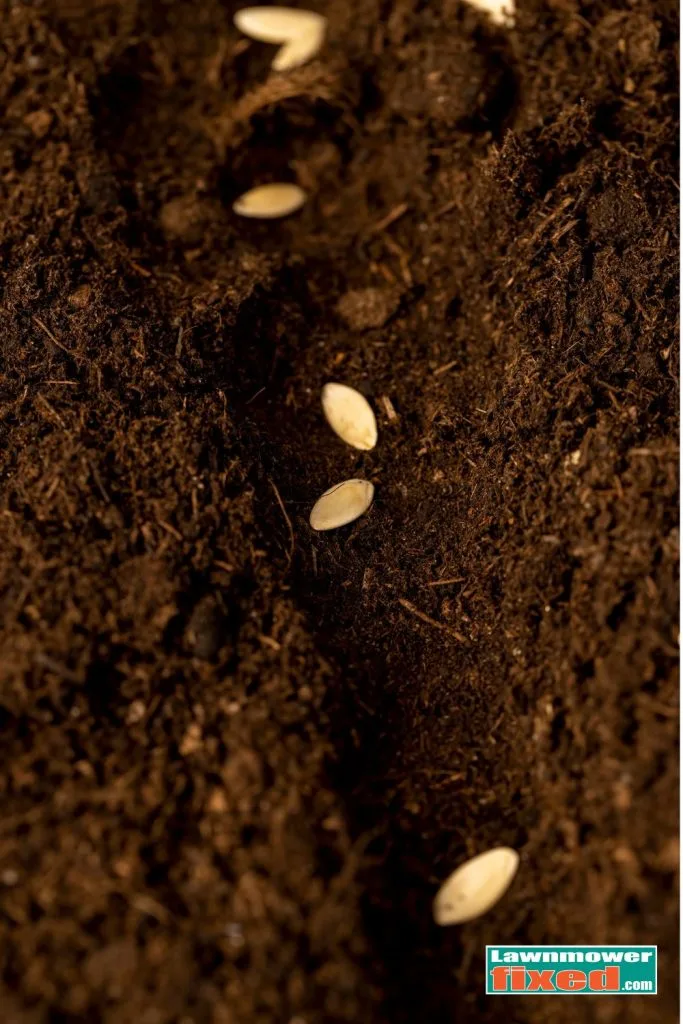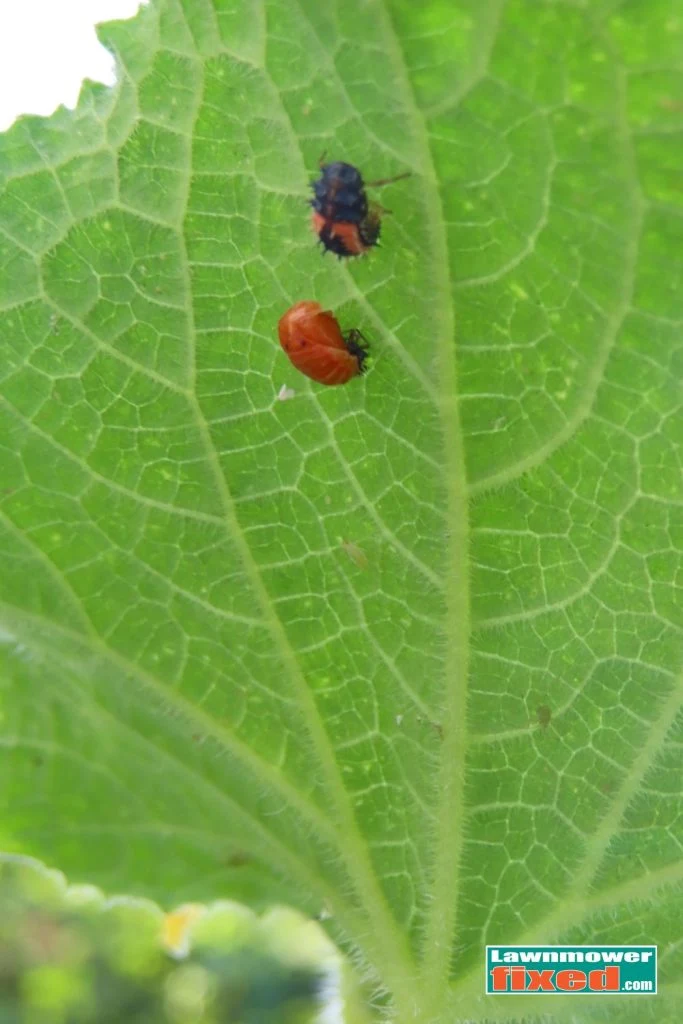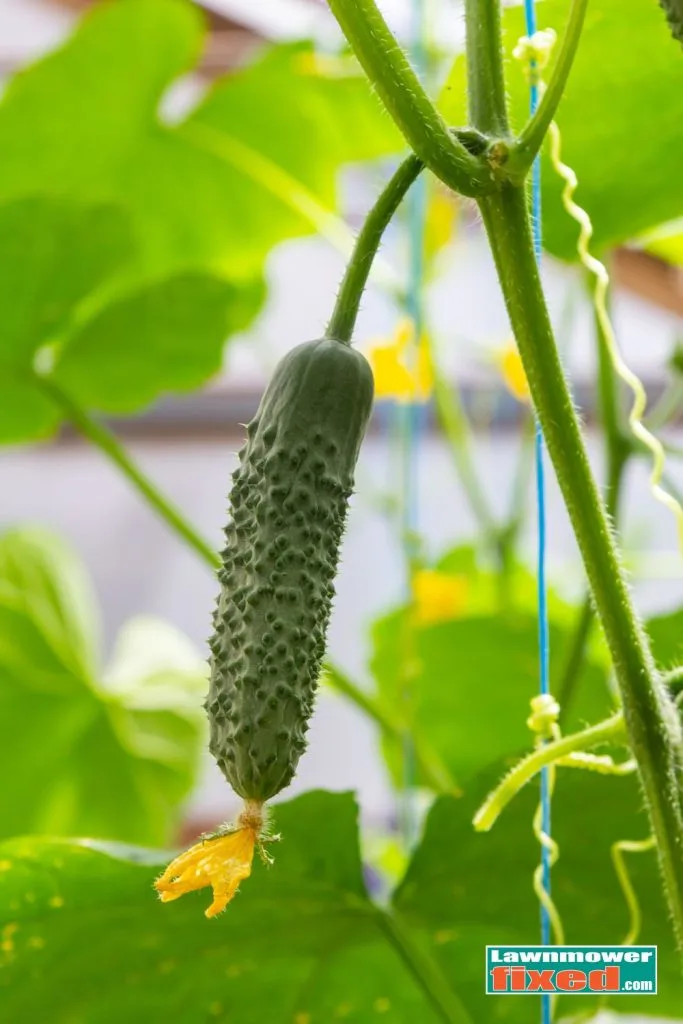If you’ve never grown cucumbers before, you’re in the right place — and I promise, it’s not as tricky as you might think. With their fresh, crisp crunch and juicy bite, cucumbers are one of summer’s greatest garden rewards. They’re perfect in salads, pickled in jars, or sliced into a jug of water on a warm day.

Cucumbers do need a little warmth and attention, but once you understand what they like, they’ll reward you with more fruit than you might know what to do with.
The good news? They grow fast. That means even if you’re getting started a little later in the season, there’s still time to grow your own.
In this guide, I’ll walk you through everything step by step — whether you’re starting from seed or buying a young plant, growing outdoors in beds or on a balcony in a pot. I’ll show you how to support and care for your cucumber vines, what problems to look out for, and how to keep them pest-free. There’s even a section on growing cucumbers in containers — yes, it can be done — and how to avoid bitter fruit or shrivelling leaves.
If you’re new to gardening, don’t worry. This guide is beginner-friendly, jargon-free, and based on real experience from a home garden. Let’s get planting.
Should You Start from Seed or Buy Young Plants?
Starting from Seed

Growing cucumbers from seed is straightforward, quick, and rewarding — perfect for beginners. Because cucumbers grow fast, you don’t need to start them too early, but timing and warmth are key to success.
When to Sow
You have two main options, depending on your climate and setup:
- Sow indoors: Start seeds 3–4 weeks before your last expected frost if you want to get a head start or live in a cooler area.
- Sow outdoors: Once the soil is warm (at least 15°C / 59°F) and all risk of frost has passed, you can sow directly where they’ll grow.
Indoor Sowing Steps
- Fill small pots or modules with a quality seed-starting compost.
- Sow one seed per pot, about 1–2cm deep. Lay seeds flat, not upright — it helps the seedling push through easier.
- Place in a warm, bright location — ideally a windowsill, heat mat, or propagator. Cucumbers love warmth: 18–21°C (65–70°F) is ideal.
- Seeds usually germinate within 5–7 days.
Once sprouted:
- Move them to a bright, sunny spot but out of direct hot sun if in a greenhouse.
- Keep soil moist, but not soggy — cucumbers dislike waterlogged roots.
- When seedlings develop two true leaves, you can begin feeding lightly with a diluted liquid fertiliser every 10–14 days.
Hardening Off
Before moving your indoor-grown seedlings outside, they’ll need time to adjust:
- Begin by placing them outdoors during the day and bringing them back inside at night for 7–10 days.
- Gradually expose them to wind, cooler temperatures, and direct sunlight.
- This process helps prevent transplant shock and prepares them for life outdoors.
Direct Sowing Outdoors
If your weather is reliably warm, sowing straight into the soil is easy:
- Choose a sunny, sheltered spot with rich, well-drained soil.
- Sow seeds 1–2cm deep, 45cm (18″) apart.
- Protect with a cloche or plastic bottle top to retain heat and deter pests while they sprout.
Buying Young Cucumber Plants (Starts)

If you’re short on time, missed the sowing window, or simply prefer to skip the seed stage, buying young cucumber plants (often called “starts” or “seedlings”) is a great option — especially for beginners.
Look for plants that:
- Have strong, upright stems and healthy green leaves.
- Show no signs of yellowing, drooping, or black spots (these can signal disease or poor growing conditions).
- Have compact growth — avoid leggy or overgrown plants, which may struggle to adapt after transplanting.
- Are not root-bound — gently lift the pot and check for roots circling tightly inside. A few roots are fine, but a solid root ball may indicate stress.
Before Planting
- Let your new plant acclimatize to outdoor conditions by “hardening off” — place it outside during the day and bring it in at night for about a week.
- Make sure nighttime temperatures are consistently above 10°C (50°F) before planting outside.
When Transplanting
- Choose a sunny, sheltered spot and enrich the soil with compost.
- Dig a hole deep enough for the root ball, and plant at the same depth it was in the pot — not deeper.
- Water well after planting and add a mulch layer to retain moisture.
- Add support early (like a small trellis or cage) to avoid disturbing the roots later.
Aftercare Tips
- Give your transplant a little time to adjust — some wilting on the first day is normal.
- After a week, begin feeding with a balanced or tomato fertiliser to support steady growth.
- Keep an eye out for slugs or snails, which love tender young cucumber leaves.
Indoor or Outdoor Cucumbers: What’s Best?
Cucumbers love warmth, so where you grow them depends on your local climate and setup.
Greenhouse/Polytunnel Growing
This is ideal in cooler climates. You’ll get a longer season, more consistent growth, and protection from pests.
Outdoor Growing
Cucumbers can do well outdoors once all risk of frost has passed. Pick a sunny, sheltered location with well-drained soil. Use cloches or fleece early in the season to warm the soil and protect young plants.
Trellis Growing: Why It’s Worth It
Training your cucumbers to grow up a trellis — a simple frame or structure made from wood, metal, or netting — is one of the best things you can do for a healthier, more productive plant. Cucumbers are natural climbers, and giving them vertical support helps them thrive. Growing upwards rather than sprawling across the ground saves space (great for small gardens or containers), improves airflow around the leaves (which helps prevent fungal diseases), and makes the fruit easier to spot and pick. It also keeps cucumbers clean and straight, as they’re not resting on the soil. A basic A-frame, vertical trellis, or even a sturdy tomato cage will do the job — just be sure to tie the vines gently with soft twine as they grow.
Can You Grow Cucumbers in Containers?
Yes — and quite successfully!
- Choose the Right Variety: Look for bush or compact types like ‘Bush Champion’ or ‘Patio Snacker’ — these are ideal for pots.
- Pot Size Matters: Use containers at least 30cm (12″) deep and wide, with good drainage holes.
- Add Support: Even compact varieties will benefit from a trellis or cage to keep fruits off the soil and encourage airflow.
- Feed and Water Consistently: Cucumbers are thirsty and hungry — water daily in hot weather and feed weekly with a high-potash liquid feed once they begin to flower.
How to Plant and Care for Cucumbers
- Soil prep – Cucumbers like rich, moisture-retentive but well-drained soil. Mix in plenty of compost or well-rotted manure before planting.
- Spacing – Give vining types 60–90cm (2–3ft) between plants, and compact ones around 45cm (18in). Provide climbing support early to avoid disturbing roots later.
- Sunlight – Full sun is essential — aim for 6+ hours a day.
- Watering – Keep the soil evenly moist but not soggy. Water at the base to avoid leaf problems.
- Pinching & Training – For vining types, pinch out the growing tip after 6–7 leaves to encourage branching. Train vines up supports to save space and improve air circulation.
Common Problems & Pests (And What to Do)
Aphids
These tiny sap-suckers can distort new growth. Spray with a diluted mix of water and a few drops of washing-up liquid, or blast them off with a strong water jet. Encourage ladybirds!
Introducing Ladybugs (Ladybirds)
If aphids are becoming a problem, one of the most natural and effective solutions is to introduce ladybugs into your garden. These little garden heroes can eat up to 50 aphids a day — each! You can attract them naturally by planting pollen-rich flowers like dill, fennel, calendula, or yarrow, or you can purchase live ladybugs online or from garden centres.

Release them in the early evening, ideally after lightly misting the plants with water to encourage them to stay put.
Avoid using any chemical sprays if you’re relying on ladybugs — they work best in a healthy, organic garden. With a bit of help from these helpful beetles, aphid populations are usually brought under control quickly and naturally.
Cucumber Beetles (U.S.)
Bright yellow beetles that chew leaves and spread disease. Use floating row covers early in the season and hand-pick if needed.
Powdery Mildew
Looks like white flour on leaves. Caused by high humidity and poor airflow. Remove affected leaves and try a milk spray (1 part milk to 9 parts water) as a preventative.
Root Rot

Overwatering or poorly drained soil can lead to rot. Always use free-draining compost and avoid waterlogged pots.
Whitefly & Spider Mite (Indoors/Greenhouse)
These pests thrive in warm conditions. Use yellow sticky traps and mist plants regularly to discourage mites.
When and How to Harvest

Pick cucumbers while they’re still young and tender. Leaving them too long can make them seedy and bitter.
- Check daily once the fruits start forming.
- Cut rather than pull to avoid damaging the vine.
- Regular harvesting encourages more fruit to form.
Bonus Tips for Cucumber Success
- Mulch around the base of outdoor plants to conserve moisture and keep weeds down.
- Avoid letting soil dry out — inconsistent watering can lead to bitter fruit.
- Companion planting with nasturtiums or marigolds can help deter pests.
- Rotate crops each year to reduce soil-borne disease risk.
Final Thoughts
Cucumbers are one of the most rewarding crops you can grow — fast, productive, and perfect for beginners. Whether you’ve planted them in a garden bed, a raised container, or a sunny balcony pot, with a little care and the right support, your plants will soon be trailing with crisp, refreshing fruit.

Once the harvest begins, you might find yourself with more cucumbers than you can eat — and that’s a lovely problem to have.
Here are just a few things you can do with them:
- Slice them fresh into salads and sandwiches for a cool, hydrating crunch.
- Infuse water or cocktails with cucumber for a spa-style twist.
- Make quick pickles in vinegar and dill — they keep in the fridge for weeks.
- Try traditional canning or lacto-fermentation if you want to preserve your harvest for longer (and build up a stash of homemade pickles).
- Blend into soups or smoothies, or use in refreshing salsas and relishes.
The more you grow, the more you’ll discover how versatile cucumbers really are — both in the garden and the kitchen.
So whether this is your first season or your fifth, cucumbers are a fantastic crop to try. Give them sunshine, support, and steady watering, and they’ll keep you cool all summer long.

